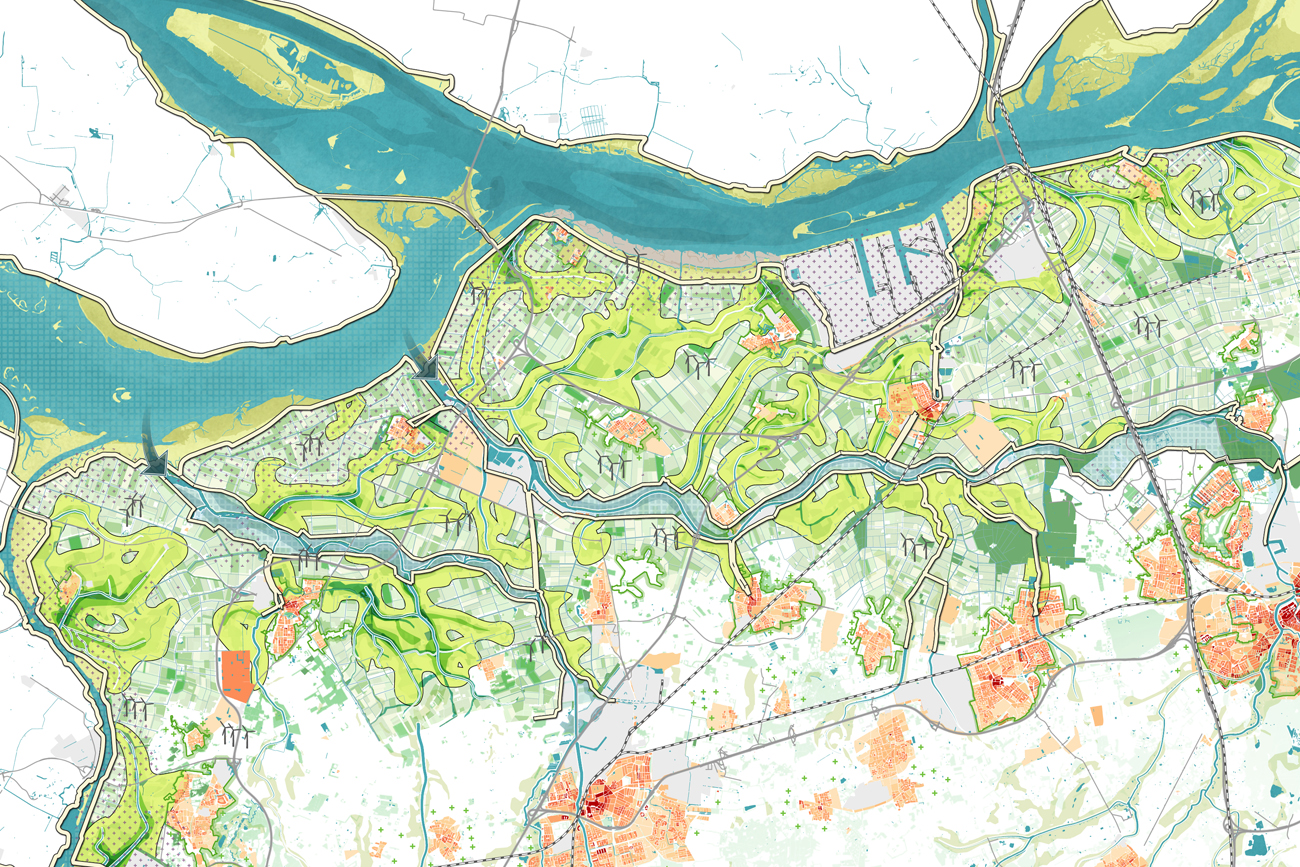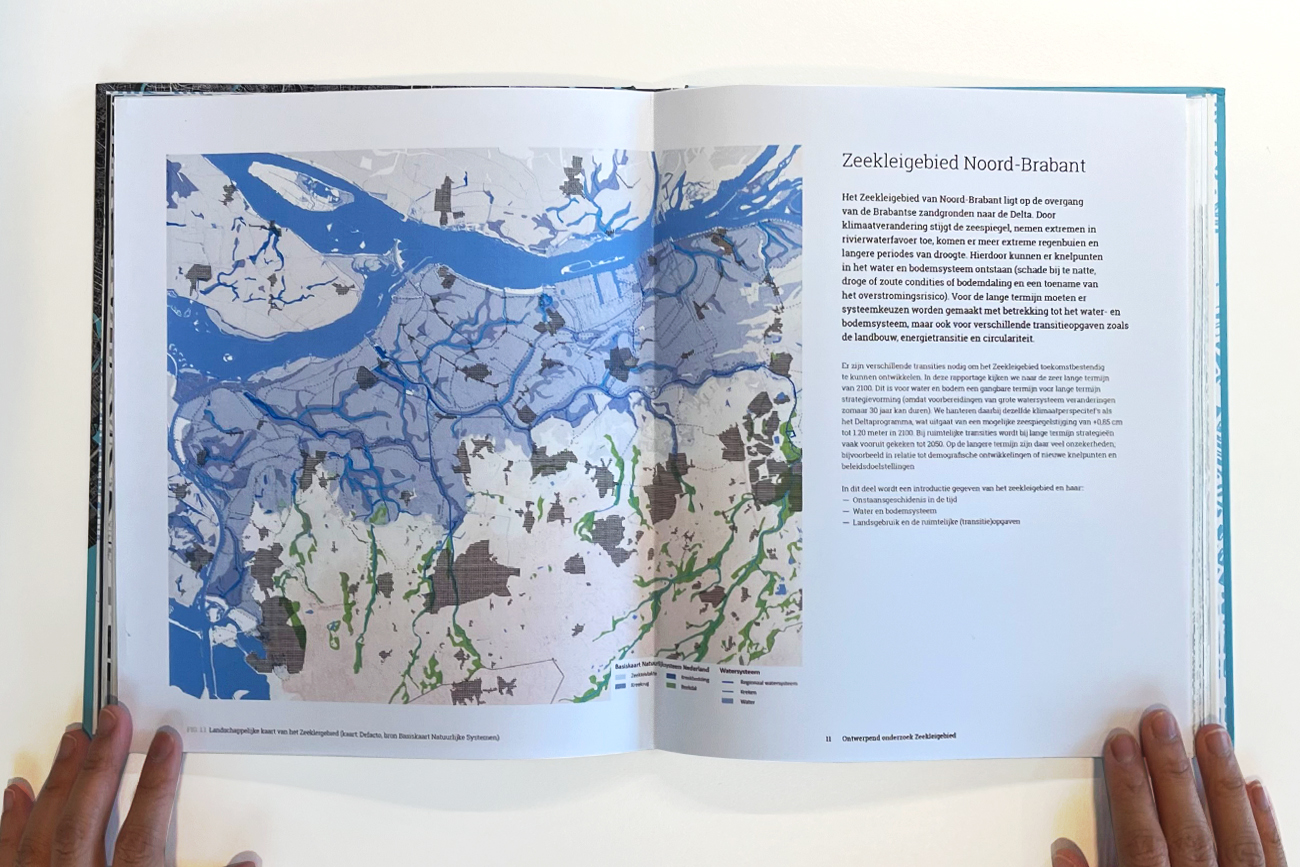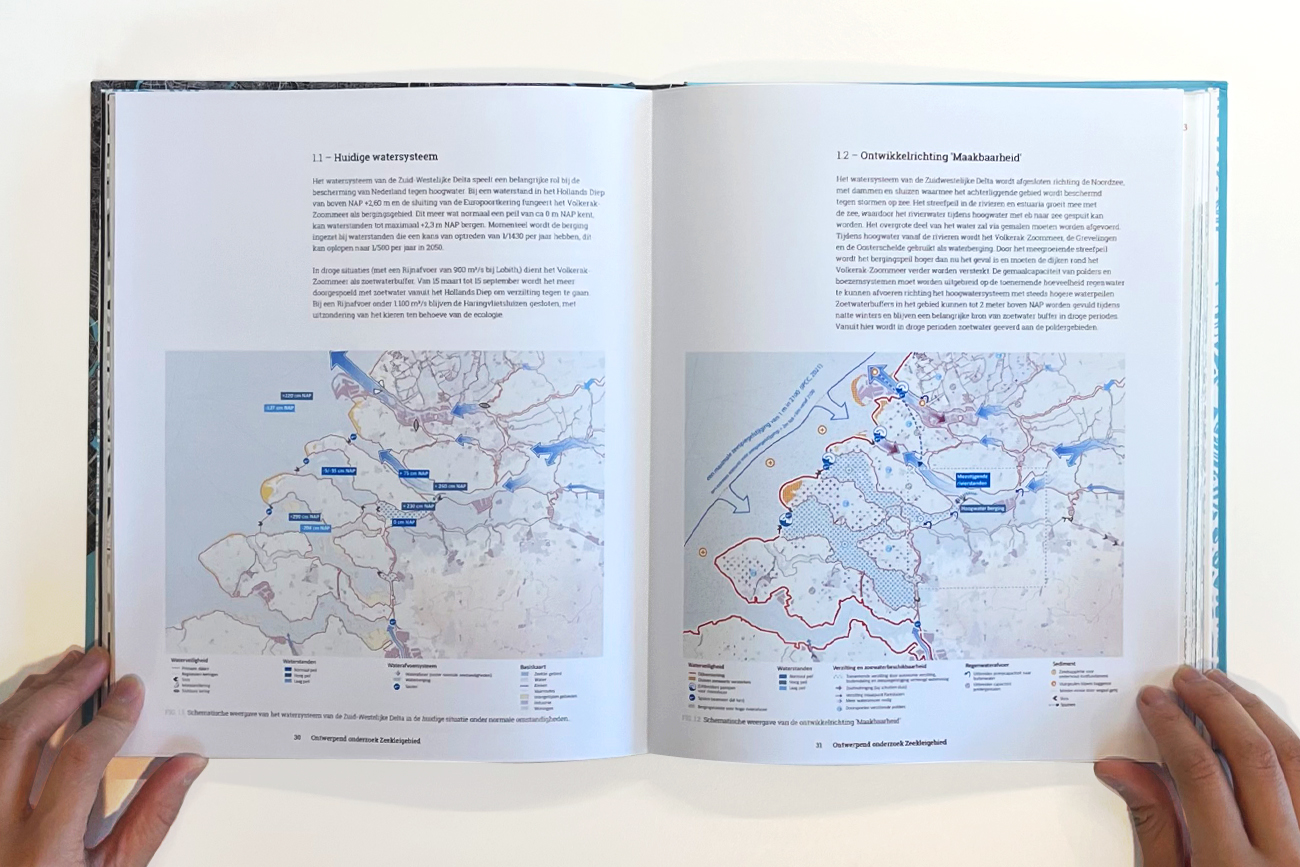Provincie of Noord-Brabant
Future of North-Brabant
System analysis and transition paths for future scenarios
Climate change will impact the landscape of the sea clay area, due to its location on the border from the Delta to the high sandy soils. Sea level rise, increasing extreme rainfalls, drought and salinization will drastically change the water and soil system. At the same time, there are spatial tasks regarding agriculture, nature, housing, energy and infrastructure. In this design study, a design-based approach was used to visualize how strategic choices for the water and soil system lead to different future scenarios, each with its own spatial conditions, opportunities and challenges.
The approach consisted of a system analysis, visualizing the challenges and drawing up three future perspectives in co-creation with area partners. The perspectives are based on three key approaches regarding the water and soil system:
Controllability: the existing system is progressively adapted and expanded to facilitate current land use. This scenario requires large-scale investments in pumping capacity, dike reinforcement and infrastructure, and leads to high energy demands. It maintains current land use but is sensitive to system shocks during extreme climate events.
Robustness: We proactively invest in a resilient and natural water system, with space for water storage, infiltration and tidal nature. This scenario combines goals for nature, agriculture and living environment, and contributes to biodiversity, climate adaptation and recreation. The robust system offers future-proof conditions, but requires a lot of space and public resources.
Adapting land use: in this scenario we limit interventions in the system, and adapt use to changing conditions. Functions shift along with the possibilities of the system. This leads to innovations in agriculture (such as salt-tolerant crops) and revision of functions in vulnerable areas. There is a risk that this scenario will lead to fragmentation and ‘every man for himself’ solutions unless there are clear frameworks and cooperation.
For each perspective, a ‘step-by-step’ scheme was then created that clearly shows the investments, actions and actors over time (and the differences between the three future perspectives).
Client: Province of Noord-Brabant and Waterschap Brabantse Delta
Door de ligging op de grens van de Delta naar de hoge zandgronden zal klimaatverandering impact hebben op het landschap van het zeekleigebied. Door zeespiegelstijging, toenemende neerslagextremen, verdroging en verzilting verandert het water- en bodemsysteem ingrijpend. Tegelijkertijd liggen er ruimtelijke opgaven op het gebied van landbouw, natuur, woningbouw, energie en infrastructuur. In dit ontwerpende onderzoek is ontwerpend in beeld hoe strategische keuzes voor het water- en bodemsysteem leiden tot verschillende toekomstscenario’s, elk met eigen ruimtelijke condities, kansen en uitdagingen.
De aanpak bestond uit een systeemanalyse, het in beeld brengen van de opgaven en het in co-creatie met gebiedspartners opstellen van drie toekomstperspectieven. De perspectieven zijn gebaseerd op drie grondhoudingen ten opzichte van het water- en bodemsysteem:
Maakbaarheid: het bestaande systeem wordt stapsgewijs aangepast en uitgebreid om het huidige landgebruik te faciliteren. Dit scenario vraagt om grootschalige investeringen in pompcapaciteit, dijkversterking en infrastructuur, en leidt tot een hoge energiebehoefte. Het houdt het huidige landgebruik in stand, maar is gevoelig voor systeemschokken bij extreme klimaatsituaties.
Robuust: we investeren proactief in een veerkrachtig en natuurlijk watersysteem, met ruimte voor waterberging, infiltratie en getijdennatuur. Dit scenario combineert doelen voor natuur, landbouw en leefomgeving, en draagt bij aan biodiversiteit, klimaatadaptatie en recreatie. Het robuuste systeem biedt toekomstbestendige condities, maar vraagt veel ruimte en publieke middelen.
Landgebruik aanpassen: in dit scenario beperken we ingrepen in het systeem, en passen we het gebruik aan op de veranderende condities. Gebruiksfuncties verschuiven mee met de mogelijkheden van het systeem. Dit leidt tot innovaties in landbouw (zoals zouttolerante teelten) en herziening van functies in kwetsbare gebieden. Het risico bestaat dat dit scenario leidt tot versnippering en ‘ieder voor zich’-oplossingen, tenzij er duidelijke kaders en samenwerking zijn.
Voor ieder perspectief is vervolgens een ‘hink-stap-sprong’ schema gemaakt waarin de investeringen, acties en actoren in de tijd (en de verschillen tussen de drie toekomstperspectieven) goed zichtbaar zijn.
Opdrachtgever: Provincie Noord-Brabant en Waterschap Brabantse Delta






























